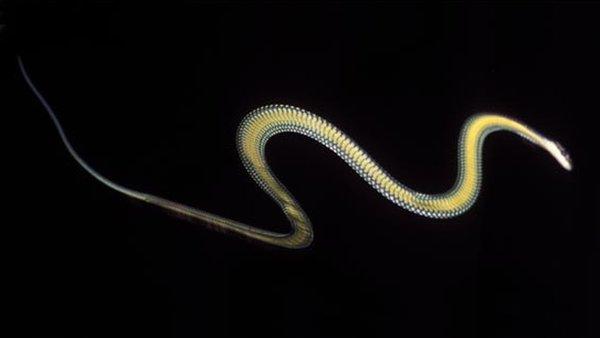Tree-hugging snakes squeeze tight for safety
- Published
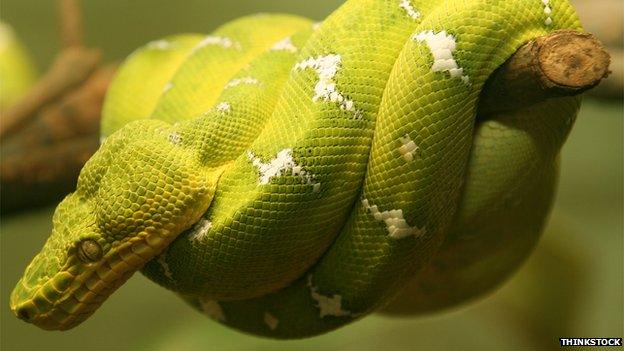
The green tree python was among the five species of snake found to over-exert when gripping trunks
When a snake climbs a tree, it squeezes the trunk up to five times harder than necessary, according to a new study.
For the first time, biologists have measured the force exerted by climbing snakes, using pressure sensors on a vertical pipe, wrapped in tennis grip.
All 10 of the snakes in the study held onto the pipe much tighter than was necessary to support their own weight.
The research suggests that the animals place safety ahead of efficiency, making a fall as unlikely as possible.
"What's interesting about this, is it's a choice by the animal to do more than they necessarily need to do," said Dr Greg Byrnes, who did the experiments at the University of Cincinnati and now teaches at Siena College in New York State.
Published in the journal Biology Letters, external, Dr Byrnes' study is the first indication that snakes employ a big "safety factor" when climbing.
Pressure ripples
"We weren't sure if it would be that way. In other fields of biology, you see large safety factors," Dr Byrnes told the BBC. Structural elements like bones, he explained, are often stronger than they need to be to withstand everyday loads.
"But this was the first time anyone's really tested something where the animal's choosingto give itself a safety factor."
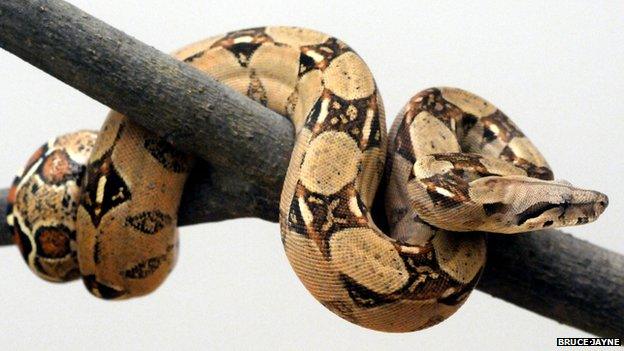
Boa constrictors, which spend less of their time up trees, clung on the tightest of all the species studied
To make the measurements, Dr Byrnes and his colleague Prof Bruce Jayne got five different snake species to climb a specially built pipe, equipped with pressure sensors and wrapped in many metres of tennis racquet tape, to make it easier - but not too easy - for the snakes to wind their way up.
"This is a pretty big challenge for them," Dr Byrnes said. "But if you give them bumps and things, then they can support their body weight on surfaces that aren't vertical. This is a way to make sure that they have to grip it."
A live read-out of the force being applied by a snake as it climbs a pipe in the lab
The snakes, which included three boa constrictors and a green tree python, all used a climbing technique called "concertina locomotion". Ripples of squeezing muscles, holding the snake onto the column, travel along its length while the spaces in between inch forward.
As they climbed, the sensors recorded how much pressure was applied, all along the pipe.
Cautious strategy
Because climbing is hard work, and snakes have excellent control over how tightly they squeeze - constrictors, famously, can release their grip on a meal when they feel its heartbeat stop - the researchers expected them to use an economical grip, just strong enough to keep them moving.
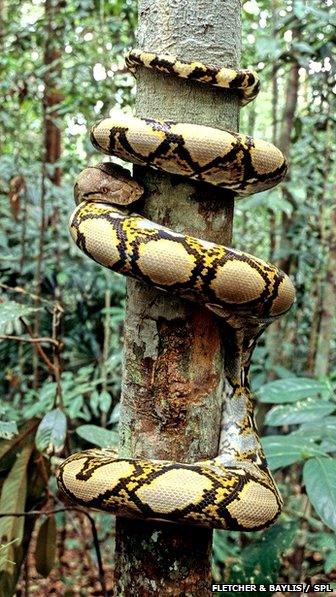
A reticulated python - clinging on for dear life?
The fact that every snake allowed a big safety factor, squeezing from two to five times harder than needed, was a surprise.
It suggests a strategy similar to that seen when people are given heavy or difficult objects to hold, where research shows that we tend to use forces two to four times stronger than necessary.
The urge is understandable, Dr Byrnes said. "Imagine you want to jump across a stream - by how far do you clear it? Do you make it close, or go as far as you can?
"Or if you gripped your pint glass, right at the top with two fingers, how much harder are you squeezing on it than you really need?"
Having some redundancy also means if the situation changes, the snake won't slip. At certain times during their climb, several of the snakes were able to support their entire weight with just one loop around the pipe.
Some were also reluctant to set off in the first place.
"We put a dark cylinder at the top, so they can climb to safety," Dr Byrnes explained.
"Some of the snakes are very good, they see it and they go straight for it - some of the others would rather try and bite you than actually try and get up."
- Published23 July 2014
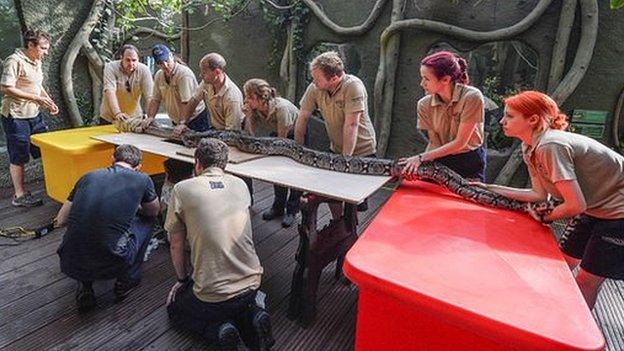
- Published20 May 2014

- Published30 January 2014
